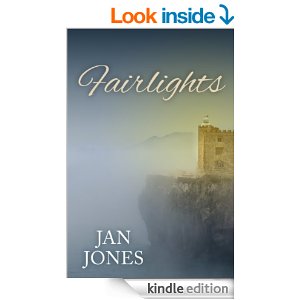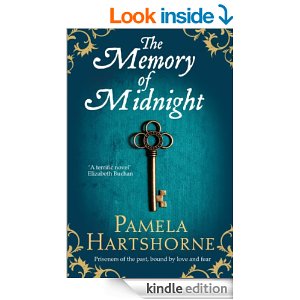Archive for May, 2014
GUEST POST Beryl Kingston
Welcome to the first guest I have hosted on my blog, distinguished novelist Beryl Kingston, whose Easter Empire trilogy (inspired by the fact that a woman founded WH Smith) was a favourite, long before I met her, let alone enjoyed the privilege of her friendship.
Like me, she has been tagged to contribute to the Writing Process blog roll, in her case by lovely Mary Stewart-inspired author, Jan Jones. Over to Beryl
My Writing Process
What am I working on?
This is going to sound like showing off but at the moment, after three and a half years when I couldn’t write at all, I’m polishing off a collection of poems, a play about William Blake’s trial and a novella about a conceited cat, all of which are taking me in different directions.
How do my stories differ from others in my genre?
I suppose the honest answer is that I don’t know. My first agent, the renowned Darley Anderson wanted me to be classed as ‘a romantic writer’. I never thought I was.
Why do I write?
I started writing when I was seven because I knew I wasn’t allowed to tell anybody about what was happening to me and I had to tell someone so I wrote it all down in a diary, which was private. Now it is because I enjoy it and there are always tales to tell.
How does my writing process work?
I used to assume that my writing method was more or less what other writers did, if I thought about it at all, but then I got to know other writers and discovered I was odd. There is a pattern to it though and a method, of sorts, and it works for me.
I spend about three months getting to know my main characters, what they think and why, how they talk to a variety of people, what and who have made them what they are. I do it until I can live in their skin. It’s rather like method acting. At the same time I visit the settings for my story. (I used to love doing that when Roy was alive. It was like a holiday.) I try to find a different setting for each new book and make several visits in the course of a year so as to see the place in all four seasons and different kinds of weathers. I fill notebooks with as much detail as I can get. Then when I’m living under the skin of my protagonists, and the plot has begun to form out of all the things that are going to happen to them, I start to write.
I don’t begin at the beginning of the book and plough on doggedly until ‘The End’. I’m much too self-indulgent for that. I start with the scene that’s singing to me most strongly. In my first book it was the moment my hero sees the woman he’s going to marry, in another it was the Battle of Trafalgar, in another it was when my heroine meets up with anti-road protesters and sees her first demonstration. Then I move on to other scenes I fancy. When I’ve got what I call a run, a series of scenes that ought to run in sequence, I stitch them together. It’s rather like making a patchwork quilt and it’s a very useful part of the process because, if I’m reading something and it’s boring me because I want to get on to the next ‘good bit’, I simply cut it out, and if I see moments that have – or will have – ‘echoes’ I can work on them too. Eventually so many runs are stitched together that I have a book. It’s a very satisfactory way to write – at least for me – although it does look a muddle.
Mary Stewart RIP
Such sad news that wonderful Mary Stewart died on 9 May. I have been watching again the interview she gave to Off the Page on Scottish television.
In 2006 the Romantic Novelists’ Association gave Mary Stewart a Lifetime Achievement Award. I collected the tributes. From my own archive, as far as I can tell, this is what we told her then.
The Romantic Novelists’ Association salutes
Mary Stewart
and says thank you for
hours of wonderful reading
and
for inspiring so many of us
18th August 2006
From RNA Members
Diane Pearson writes
Mary Stewart, almost single handed, brought the gothic romantic novel back into contemporary popularity, giving it a unique new quality that was essentially her own. Her books are now household names.
Diane Pearson, editor and author, wrote international best sellers ‘Czardas’ and ‘Summer of the Barshinskys’, among others, and [is] was President of the Romantic Novelists’ Association.
Jan Jones writes
“It was the egret, flying out of the lemon-grove that started it.”
That, the opening line from The Moonspinners, sums up what Mary Stewart means to me. The to-die-for sense of place expressed in just a few skilful words. The delicious hint of adventure and romance. The promise of a glorious few hours, curled up with one of my favourite authors, oblivious to the outside world.
I could read Mary Stewart’s books over and over – and every time I do, I’m transported again to that precious state where nothing else matters except what you are reading.
Thank you, Mary.
Jan Jones is the author of ‘Stage by Stage’, winner of the 2005 Joan Hessayon Award for a First Novel and many others,most recently ‘Fairlights’.
Pamela Hartshorne writes
Mary Stewart’s writing is such a model of intelligence and good taste, that I can’t help feeling she would have little patience with gushing appreciation . … but it is hard not to gush when I think about the enjoyment she has given me as a reader, and the influence she has had on me as a writer. Impossible, too, to choose which of her books is my favourite. I can narrow it down to six (Madam Will You Talk?, This Rough Magic, My Brother Michael, The Moon-Spinners, Airs Abover the Ground and Nince Coaches Waiting) but no further. Every time I read these books, I find something new, something that strikes a chord, something that makes me think “What must it be like to be able to write like that?”
I love the intelligence and integrity of her characters, the way her heroes are barely described and yet are so extraordinarily attractive, but I think what draws me to these books most particularly is the sense of place they evoke, so that I fell when I close the book as if I have actually been on a Greek mountainside, or swum with a dolphin in Crete. And as for the food . . . ! Anyone who has ever read Madam, Will You Talk? remembers the wonderful meal Charity shares with Richard Byron in the Stewart fans, comparing it with the midnight feast after the Easter Ball in Nine Coaches Waiting or the dinner at Delphi in My Brother Michael, all remembered as vividly as if we had eaten them ourselves. It is thirty-five years since I first read a Mary Stewart, but her lucid, luminous prose remains a matchless source of pleasure and inspiration.
Pamela, who also writes as Jessica Hart, is a multi prize winner. In 2005 she won the US RITA for Best Traditional Romance for Christmas Eve Marriage and in 2006 the RNA Romance Prize for Contracted Corporate Wife. Her most recent novel is ‘The Memory of Midnight’.
Marina Oliver writes
Mary Stewart is a storyteller par excellence. Not only can she evoke great tension, her plots are intricate and satisfying. She transports the reader to the places she describes so vividly, that I can imagine myself on a Greek hillside, or a Lebanese valley, smelling the flowers, feeling the heat.
She is also versatile, with books set in different eras and today. The backgrounds are always so convincing. A friend from my reading group who read one of her novels said to me, ‘It’s so good to read a real book.’
Marina Oliver, former Chairman of the Romantic Novelists’ Association, is writer, editor, tutor and reviewer. She has written ‘A Cut Above the Rest’ and many other novels.
Jenny Haddon writes
There are some authors whose words walk with you throughout your life, encapsulating a moment, a feeling. ‘Ah yes, I recognize that,’ you say, for a moment completely aware. From Nine Coaches Waiting:
The air was very still. Below me, in the valley-depths where the river ran, I could see, quite distinctly now, the pale drift of mist. The owl cried again once, very sadly, form the wood. There was a strong wet smell of earth and growing things; the smell of spring . . . not softness, not balm-and-blossoms, but something harsh and sharp that pierced the senses as the thrust of new life broke the ground. The cruellest month, breeding Lilacs out of a dead land . . . yes that was it. That was it. Not for the first time I was sharply grateful to Daddy for making poetry a habit with me. The best words in the best order . . . one always got the same shock of recognition and delight when someone’s words swam up to meet a thought or name a picture. Daddy had been right. Poetry was awfully good material to think with.
So is Mary Stewart.
Jenny Haddon has written forty something books, mainly under the pen name Sophie Weston, most recently ‘To Marry a Prince’ by Sophie Page. She [is] was then Chairman of the Romantic Novelists’ Association.
What a writer we have lost.
Edit Write Tiffle
Thank you to lovely writer Christina Hollis for inviting me to join the My Writing Process Blog hop. It comes at an excellent time for me, as I am just considering how to edit the first draft of the longest novel I have every written. (About 5 Mills & Boons in wordage.) So it has concentrated the mind wonderfully.
Currently I’m writing a story set in 1938 when nobody knew there was going to be a war, though lots of people suspected it and tried to work out what they would do if it came. There is a love story – a big one, with problems of integrity, class and sexual morality all mixed in – but the theme, I suppose, is conflict of loyalties. In the end everyone has to work out his or her own solution. We are all answerable to our own consciences, when the lights are out.
My writing process is best described as close your eyes and jump. That’s what happened when I started this book. As a result, I went in a number of wrong directions. When I was writing 55,000 word category romance, with one story, two major characters and a guaranteed happy ending, this was not an issue. Now, with a multi-character world and at least four story lines, I have to keep my eye on the landing zone. Basically I think it is going to work like this:
• Write – tick
• Read – tick
• Edit
• Write the missing stuff
• Tiffle – more politely known as polishing.
Edit
Done in pen or pencil plus highlighter pens on printed ms, with accompanying notes in a bound notebook. Loose sheets get lost. I have proved this.
1 NOTE incidents/reflections/dialogue that I need to insert to make sense of later developments. Note both where insertion is needed and where it is picked up later. NB Use reference points that Word Search will find. I am now about to kick hell out of Draft 1’s pagination.
2 UNDERLINE, sideline, highlight stuff I need to take out because it doesn’t make sense in this story.
3 CIRCLE stuff where I go on too long, repeat myself
4 QUESTION MARK anything that strikes me as odd, either because of consistency, plot, character or historical fact.
5 BRACKET anything which could be better expressed. Remember less is more.
6 THEN CUT 2) and 3). This is very satisfying! Keep outtakes for future use. Also, some editor further down the line may want them back in.
7 CONSIDER QUESTION MARKS I find this takes me back into the creative process.
8 SAVE ms as Draft 2
Write
I now know the new material that needs to go into my story (1 above), plus the issues that I need to resolve (7) and any Notes To Self that I make as I go along, especially as I approach the end. They are a focussing mechanism, not a shopping list, Essentially I am now back in the writing zone again. From now on I need to fly, not plod.
The main difficulty here, I’ve found, is seamless joining. What works best for me is to find out where the new piece has to go in and then go back and cut the preceding paragraph (or more). This gives me room to get into the writing voice I had when I first wrote that chapter. . If I read the preceding paragraph aloud and then keep speaking as I write on, it starts to feel like the spontaneous flow it should do, and not just a patch and push job.
The difference between the two
Editing is like a builder tidying up his brickwork, chopping off excess putty, filling the odd small hole. Re-writing is like removing a damaged brick and replacing it – you have to make room for it, then smoothe the joins so they don’t show.
Tiffle
This is where I deal with 5). It’s the beauty treatment – clarify, tighten, exfoliate, buff.
Word of warning here: this can go too far. From my past:
ED You said the book was nearly finished. Why isn’t it on my desk?
ME I’m just giving it a last tidy ….
ED (howls) Stop tiffling.
Tiffling is where you can go through your book and replace one word or phrase with another because you like it better. This may be good if you a) know why and it’s a good reason and b) you’re consistent. If you replace ‘silk’ with ‘satin’ and then next day change it back, you’re in a bad way.
Conclusion
That’s the theory anyway. But it’s a BIG book and I have miles to go before I sleep. So I’d be very grateful for suggestions.
Recent contributors to My Writing Process Blog Hop
Christina Hollis Bee-keeper and best selling author of historical fiction and M&B Modern Romance/Harlequin Presents christinahollis.blogspot.co.uk
Jean Bull has loved books all her life. She has worked in everything from teaching to the hotel industry and lived all over the UK, which has inspired her writing. jeanbullswritingblog.blogspot.co.uk/
Margaret Mayo author of scores of successful category romances for Harlequin Mills & Boon margaret-mayo.com/blog/
Cara Cooper writes short stories for women’s magazines, and novellas for People’s Friend, My Weekly and Ulverscroft. caracoopers.blogspot.co.uk





